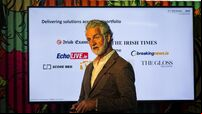Bringing Cork's past to life: the 80th anniversary of city's Public Museum

The Cork Public Museum Organising Committee in 1942, including Lord Mayor R.S Anthony, front, centre, and philanthropist and politician, Jane ‘Jeannie’ Dowdall, seated on his right
On April 4, 1945, a small crowd of guests and dignitaries gathered in Fitzgerald Park to witness the official opening of Cork Public Museum by Minister of Posts and Telegraphs, PJ Little.








